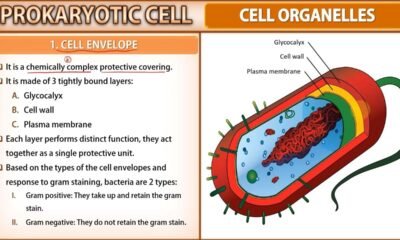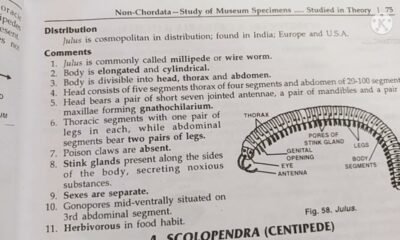Blog
Mycorrhizae: Definition, Types and Examples

In this article we will discuss about mycorrhizae definition, types and examples
What is Mycorrhizae?
- Vitadini (1842) was first to recognize the benefits of fungal structures (mycelia) that grow around plant roots.
- The term “mycorrhiza” was coined by Albert Bernard Frank in 1885
- Mycorrhiza is the symbiotic association of fungi with the roots of higher plants.
- In this association both the fungi & higher plants derive benefit form each other.
- The host plant provides shelter & food for the fungal symbiont & in turn plant acquire an array of benefits such as better uptake of phosphorus, salinity & drought tolerance, maintenance of water balance & overall increase in plant growth.
- About 90% of all land plants are associated with mycorrhiza.
- The mycorrhizal association is not available in Cruciferae, Chenopodiaceae and Resedaceae.
Types of Mycorrhizae
Peterson and Farquhar (1994) classified the mycorrhizae into following types. These are :
- Ectomycorrhiza
- Endomycorrhiza
- Arbutoid ectendomycorrhiza Mycorrhiza
- Monotropoid Mycorrhiza
1. Ectomycorrhiza
- Ectomycorrhiza is commonly called sheathing mycorrhiza.
- In this type of mycorrhiza, the root system is completely surrounded by a distinct mantle or sheath of fungal tissue from which the septate hyphae penetrates the outermost cell layer (epidermis & cortex) of all the seeded plants.
- No intracellular penetration into the epidermal or cortical cells occurs.
- An extensive network of hyphae called Hartig’s net formed between these cells.
- Great majority of vascular plants like ferns, Monocots, Dicots, Pinus, Cedrus etc. are formed from these associations with fungi belonging to basidiomycota, ascomycota.
- The presence of ectomycorrhiza also prevents growth in length of roots as a result of which swollen or coralloid roots are formed.
- E.g., Amanita, Tricholoma, Boletus, Russula, Lactarius (basidiomycota); Gyromitra esculenta (ascomycota)
2. Endomycorrhiza
- In endomycorrhiza, the fungal hyphae penetrates the root epidermis and enter the cortex establishing themselves intracellularly in cortical cells.
- The fungal hyphae may be septate or aseptate.
- Generally the fungal component present on the root surface externally forming a loose mass of hyphae.
- Fungal sheath is absent
- Hartig’s net is absent
- Types of Endomycorrhiza: Vesicular Arbuscular mycorrhiza, Ericoid Mycorrhiza and Orchidoid Mycorrhiza
A. Vesicular Arbuscular mycorrhiza (VAM)
- VAM are considered as the most common type of endomycorrhiza.
- These are produced by aseptate mycelia fungi which penetrates the root & forming vesicles & arbuscles in plant roots
- These are usually found in bryophytes, pteridophytes, gymnosperms (except Pinaceae) & all angiosperms
- The fungal hyphae produces very thick walled brown to black balloon like Chlamydospores.
- This fungal component is usually from endogonaceae (Zygomycetes)
- E,g., Glomus, Gyrospora, Acaulospora etc.
B. Ericoid Mycorrhiza
- Ericoid mycorrhizae are found in the different members of Ericaceae like Erica, Calluna, Vaccinum, Rhododendron etc.
- The fungi are slow-growing, septate and culturable.
- During this association the rootlets of the plants are covered by very sparse, loose, dark, septate hyphae that penetrate the cortex forming intercellular coils.
- The fungus gets the photosynthate from the host and improves the mineral uptake and nutrition of the host, especially P and N.
- E.g., Pezizella ericae (Ascomycotina) and Clavaria vermiculata (Basidiomycotina)
C. Orchidoid Mycorrhiza
- Orchids produce millions of tiny seeds per capsule, there is virtually no storage of food.
- Majority of seeds are unable to germinate without exogenous supply of carbohydrates.
- Therefore, mycorrhizal association is obligatory for the seeds to germinate.
- The Septate hyphae enters the embryo and colonises, develops into coils often called peltrons and it’s provides the nutrition to the seed.
- E.g., Rhizoctonia, Corticium, Ceratobasidium etc
3. Ectendomycorrhizae (Arbutoid)
- These mycorrhizae intermediate in form between ecto and endomycorrhizae types, called ectendomycorrhizae.
- Arbustus and Arctostaphylos of Ericaceae show this type of mycorrhizal association.
- Fungal sheath present.
- Septate hyphae penetrate the outer cortical cells & coils inside it.
- Hartig’s net is present in the intercellular spaces
- E.g., Wilcoxina, Sphaerosporella
4. Monotropoid Mycorrhiza
- Monotropa hypopitys is a non-green saprophytic herb.
- It has short fleshy roots that are invested with a hyphal sheath and often forming Hartig net in the cortical zone.
- Due to absence of chlorophyll, they are unable to synthesise and supply carbohydrate to the fungus.
- This fungus acts as a bridge between Monotropa and Pine plants.
- E.g., Boletus
Role of Mycorrhizae in Agriculture
- The mycorrhizal association helps in the formation of dichotomous branching and profuse root growth, thus enhances plant growth.
- Mycorrhiza helps in uptake of mineral ions, nutrients and also acts as reservoir.
- In nutrient deficient soil, the mycelial association helps in the absorption of N, Ca, P, Zn, Fe, Na and others.
- Mycorrhizal association is obligatory for the germination of orchid seeds.
- Inoculation of VAM as biofertiliser provides a distinct possibility for the uptake of P in phosphorus-deficient soil.

 Blog5 months ago
Blog5 months ago[PPT] Human Reproduction Class 12 Notes
- Blog5 months ago
PG TRB Botany Study Material PDF Free Download
- Blog5 months ago
Contribution of Indian Phycologists (4 Famous Algologist)

 Blog5 months ago
Blog5 months agoCell The Unit of Life Complete Notes | Class 11 & NEET Free Notes

 Blog5 months ago
Blog5 months ago[PPT] The living world Class 11 Notes

 Entertainment5 months ago
Entertainment5 months agoIbomma Bappam: Redefines Telugu Streaming Trend
- Blog5 months ago
Class 12 Biology Notes Chapter wise PPT

 Blog5 months ago
Blog5 months agoJulus General Characteristics | Free Biology Notes












